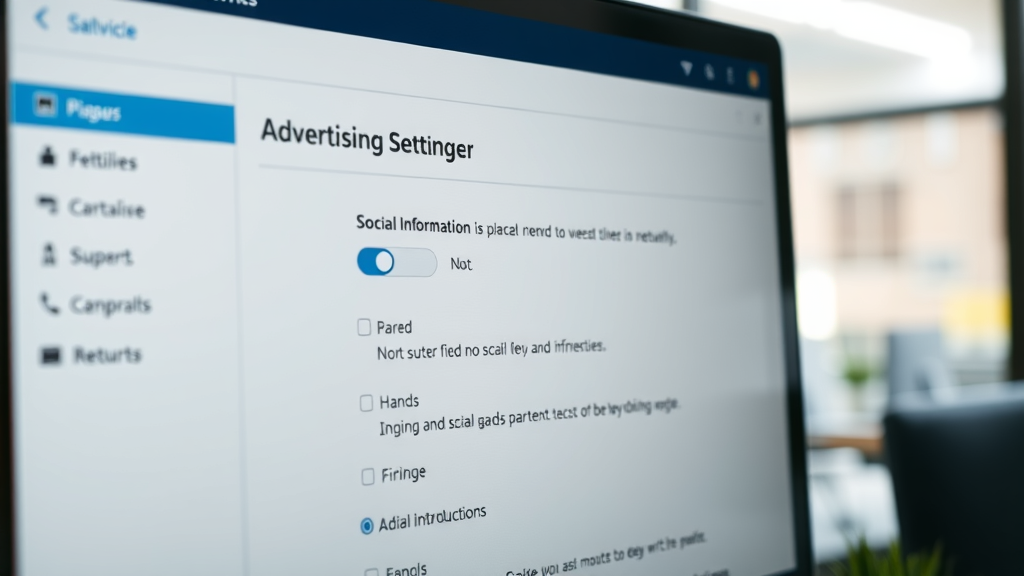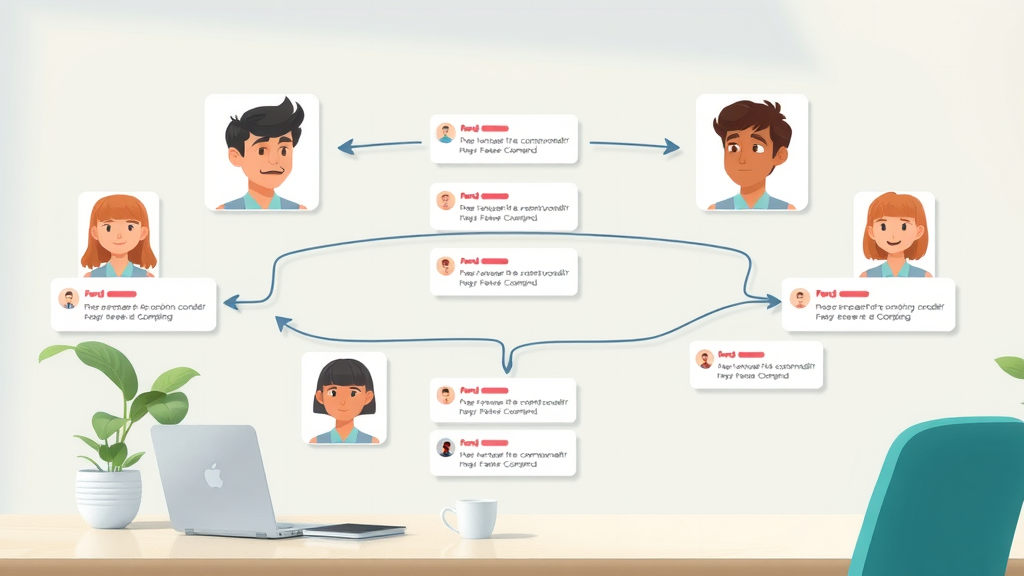Did you know that comments act like jet fuel for your meta ads campaigns, powering engagement and dramatically improving ad performance? Engagement on meta ads is more than just vanity metrics—it can be the driving force behind lowering costs and boosting your facebook ad campaign results. In this comprehensive guide, Alvaro Berrios of Alvaro Berrios Digital reveals proven and new strategies to increase comments on Meta ads , helping marketers unlock their campaigns' full potential.
Startling Facts About Engagement: Why Increase Comments on Meta Ads Matters
According to the Meta ads expert, "Comments are like jet fuel for your campaign, igniting engagement and boosting your ad's performance significantly."
When scrolling through Facebook or Instagram feeds, an ad with hundreds of comments, likes, or shares immediately grabs attention. This social proof signals value and trustworthiness to viewers, encouraging more users to interact and click. Comments not only increase visibility but also positively impact the facebook ad delivery algorithm, resulting in lower CPM (cost per mille) and reduced cost per conversion.
Alvaro Berrios explains, “If your ads lack engagement like comments, you put all your pressure on creative and copy alone, which often limits reach and effectiveness. Comments create organic interest and community around your ads, which can significantly boost overall ROI.”

Understanding Meta Ads Engagement: The Role of Comments, Likes, and Shares
Within Meta ads ecosystems, engagement breaks down into likes, comments, shares, and other interactions such as video views. While likes and shares contribute to popularity, comments stand out as a powerful driving force for campaign momentum . They signal active involvement and often contain user insights or questions that enrich the ad experience.
How Comments Influence Facebook Ad Performance and CPM
Facebook’s algorithm favors facebook ads with higher engagement, especially ad comments, because they foster meaningful conversations and indicate authentic interest. Facebook ads with numerous ad comments usually see lower CPMs and better placement in feeds.
Comments are more influential than likes because they demonstrate a behavioral commitment beyond a simple click or tap. This enhanced engagement helps the ad system optimize delivery, pushing the ad to receptive audiences at a lower cost.

Common Challenges in Generating Ad Comments on Meta Ads
Despite the clear benefits, marketers often struggle to generate comments. Many campaigns receive likes or passive engagement, but comments require users to stop and interact, which can be a higher barrier.
The primary challenges include:
-
Engagement objectives are broad and may not focus specifically on comments.
-
Ads optimized solely for video views or link clicks do not directly incentivize comments.
-
Low initial engagement can create a feedback loop where potential commenters feel there’s no activity to join.
A frustrated advertiser might have an eye-catching campaign and solid targeting but still see minimal commenting activity, limiting social proof and ultimately campaign impact.

Traditional Strategies to Increase Comments on Meta Ads: Engagement Objective Explained
Historically, advertisers attempted to boost comments by creating campaigns with an engagement objective . This objective targets users likely to interact with posts through likes, shares, comments, or video views.
However, as Alvaro Berrios notes, this method has limitations: “When you optimize for engagement, you can't guarantee more comments specifically. Engagement includes likes, shares, or video views, many of which don’t contribute visible social proof on your ads.”
Why Engagement Campaigns Often Fail to Deliver Sufficient Ad Comments
The engagement objective is broad, so an ad may generate numerous engagements, but very few actual comments. This is problematic as comments carry more significant social proof and algorithmic advantages than likes or views alone.
Alvaro further explains, “You might see thousands of engagements on an ad, but if only a handful are comments, your ad lacks the community evidence to really catch attention and lower costs effectively.”
Case Study: Real-World Example of Engagement Campaign Performance
One example from a long-running campaign shows nearly 69,000 engagements, but just six comments over several months. This highlights how engagement optimization without focus can underperform specifically on comment growth.
This case reveals the need for improved strategies beyond traditional engagement objectives to genuinely increase comments on Meta ads and drive scalable success.

New Meta Feature to Increase Comments on Meta Ads: Combining Likes and Reactions Across Ads
Meta has introduced a game-changing feature in Ads Manager that allows advertisers to automatically combine likes, reactions, and ad comments across multiple similar meta ad campaigns . This helps accumulate social proof rapidly and efficiently, especially for small businesses that struggle with engagement growth.
How to Enable the Social Information Feature in Meta Ads Manager
To activate this feature, navigate to the hamburger menu in your Meta Ads Manager, then head to Advertising Settings within the facebook ads manager . Within the settings, locate Social Information and enable the option "Combine likes and reactions for similar ads."
This setting allows Meta to aggregate social engagement from multiple ads with similar text, images, or offers, amplifying social proof organically without additional cost or ad spend.

Practical Example: How Combined Comments Work Across Different Campaigns
Consider a supplement business running two campaigns: one for a pre-workout and another for recovery supplements. Both use similar ad copy and imagery. If someone comments positively on the pre-workout ad, Meta can apply that comment to the recovery supplement ad too, enhancing social proof across campaigns.
This pooling of comments creates a multiplier effect, allowing faster accumulation of comments and decreased CPMs, which leads to cheaper sales and better campaign performance.

The expert from Meta Business states, "This feature is a game-changer for small businesses struggling to build engagement quickly and cost-effectively."
Best Practices for Managing Comments on Facebook Ads
Increasing comments is only part of the equation. Managing those comments effectively is crucial for maintaining brand reputation and fostering positive engagement.
Tools and Techniques for Comment Moderation on Meta Ads
Meta provides moderation tools such as automatic filters, keyword moderation, and bulk comment management to help advertisers handle high volumes of facebook ad comments efficiently. Alvaro Berrios recommends using these tools to respond quickly, highlight valuable comments, and remove spam or inappropriate content to protect brand integrity.

Handling Negative Comments and Protecting Brand Reputation
Negative comments are inevitable, but constructive handling can turn critics into advocates. Prompt, empathetic, and helpful responses mitigate damage and demonstrate brand transparency. Ignoring or deleting negative feedback can harm trust and advertiser credibility.
Comprehensive Table: Comparison of Strategies to Increase Comments on Meta Ads
|
|
|
|
Comparison of Strategies to Increase Comments on Meta Ads |
|
Strategy |
Pros |
Cons |
Expected Outcomes |
|---|---|---|---|
|
Traditional Engagement Campaign Objective |
Easy to set up, generates broad engagement |
Low comment specificity, engagement is diluted among likes/shares/views |
Moderate increase in social proof, slow comment growth |
|
New Meta Feature: Combining Likes & Reactions |
Aggregates engagement across campaigns, accelerates comment accumulation, lowers CPM |
Limited to similar ads and creatives, gradual rollout |
Significant boost in visible social proof, improved ad performance |
|
Comment Management Best Practices |
Protects brand, encourages positive conversations, timely moderation |
Requires active management and resources |
Enhanced user experience, sustained engagement quality |
People Also Ask: Managing and Increasing Comments on Meta Ads
How to manage meta ads comments?
Managing meta ads comments involves using Meta’s built-in moderation tools such as keyword filters, auto-hide settings, and timely responses to maintain positive engagement. Active monitoring helps identify spam or negative comments and ensures engagement remains positive and relevant.
How to get more messages on Facebook ads?
To increase messages, include clear call-to-action buttons like "Send Message," use conversational creatives, and target audiences likely to initiate chat. Prompt replies encourage more users to message your business.

How to get more comments on a Facebook post?
Create engaging facebook ad content that invites responses by asking questions, running contests, or prompting opinions to increase comments on facebook. Using timely, relatable topics increases the likelihood of users commenting.
How to filter comments on meta ads?
Meta Ads Manager allows filters by keywords, sentiment, and content. Set up moderation rules to automatically hide or flag inappropriate comments, maintaining a clean and trustworthy community environment.
Key Takeaways: Expert Tips to Increase Comments on Meta Ads
-
Comments significantly boost ad performance by providing social proof.
-
Traditional engagement campaigns may not yield high comment counts.
-
Meta’s new feature combines likes and reactions across similar ads to accelerate comment growth.
-
Enabling social information settings is essential to leverage this new feature.
-
Effective comment management protects brand reputation and enhances user experience.
Conclusion: Implementing Proven Strategies to Increase Comments on Meta Ads
Effective Meta ads campaigns today rely heavily on robust social proof, with comments playing a pivotal role. While traditional engagement objectives provided some traction, they lack specificity. The newly introduced Meta feature to combine engagement across ads offers a tremendous opportunity to accelerate comment accumulation and reduce campaign costs. Coupled with smart comment moderation and engagement best practices, advertisers can meaningfully grow their community and enhance campaign results. Implementing these strategies recommended by Alvaro Berrios Digital equips marketers to unlock a new level of performance in their Meta ads.
Call to Action
Ready to elevate your Meta ads with expert management and cutting-edge engagement strategies? Contact Alvaro Berrios Digital today to explore tailored Facebook ad solutions that maximize comments and conversions for your business!
 Add Row
Add Row  Add
Add 








Write A Comment